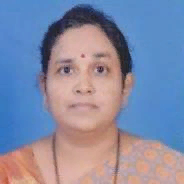
Meenakshi. R. Patil
Work place: Dept of E&C, JAGMIT Jamakhandi,
E-mail: meenakshirpatil@gmail.com
Website:
Research Interests: Engineering, Computational Engineering
Biography
Prof. Meenakshi R. Patil, The author has completed B.E. in Electronics Engineering from Shivaji University Kolhapur in 1994, M.E. Electronics Engineering from Shivaji University Kolhapur in 2001. This author was a research student of Walchand College of Engineering Sangli from January 2006 and received PhD degree from Shivaji university in July 2011.
Author Articles
Patch based Image Inpainting Technique Using Adaptive Patch Size and Sequencing of Priority Terms
By Anupama S Awati Meenakshi. R. Patil
DOI: https://doi.org/10.5815/ijigsp.2019.08.06, Pub. Date: 8 Aug. 2019
Image Inpainting is a system used to fill lost information in an image in a visually believable manner so that it seems original to the human eye. Several algorithms are developed in the past which tend to blur the inpainted image. In this paper, we present an algorithm that improves the performance of patch based image inpainting by using adaptive patch size and sequencing of the priority terms. The patch width (wxw) is made adaptive (proportional) to the area of the damaged region and inversely proportional to standard deviation of the known values in the patch around point of highest priority. If the neighbourhood region is a smooth region then standard deviation is small therefore large patch size is used and if standard deviation is large patch size is small. The algorithm is tested for various input images and compared with some standard algorithm to evaluate its performance. Results show that the time required for inpainting is drastically reduced while the quality factor is maintained equivalent to the existing techniques.
[...] Read more.Inpainting of Structural Reconstruction of Monuments Using Singular Value Decomposition Refinement of Patches
By Anupama S Awati Meenakshi. R. Patil
DOI: https://doi.org/10.5815/ijigsp.2019.05.05, Pub. Date: 8 May 2019
Image Inpainting of ruined historic monuments and heritage sites can help in visualizing how these may have existed in the past. An inpainted image of a monument can serve as a tool for physical reconstruction purpose. The purpose of the proposed method is to fill cracks and gaps of selected damaged regions in heritage monuments by exploiting the statistical properties of foreground and background along with the spatial location of the damage in the image of the monuments. The patch based image inpainting algorithm is improved by segmenting the image using K means clustering to search the candidate patches in relevant source region only. Segmentation improves patch searching in terms of both quality and time. The priority of the patch to fill is decided based on the standard deviation of the patch around destination pixel. Kn similar patches are selected from the source region based on minimum value of sum squared distance. The selected patches are refined using an efficient patch refinement scheme using higher order singular value decomposition to capture underlying pattern among the candidate source patches. The threshold for refinement is selected by using minimum and maximum value of standard deviation of the target patch. This eliminates random variation and unwanted artifacts. Experimental results carried on a large number of natural images and comparisons with well-known existing methods demonstrate the efficacy and superiority of the proposed method.
[...] Read more.Other Articles
Subscribe to receive issue release notifications and newsletters from MECS Press journals